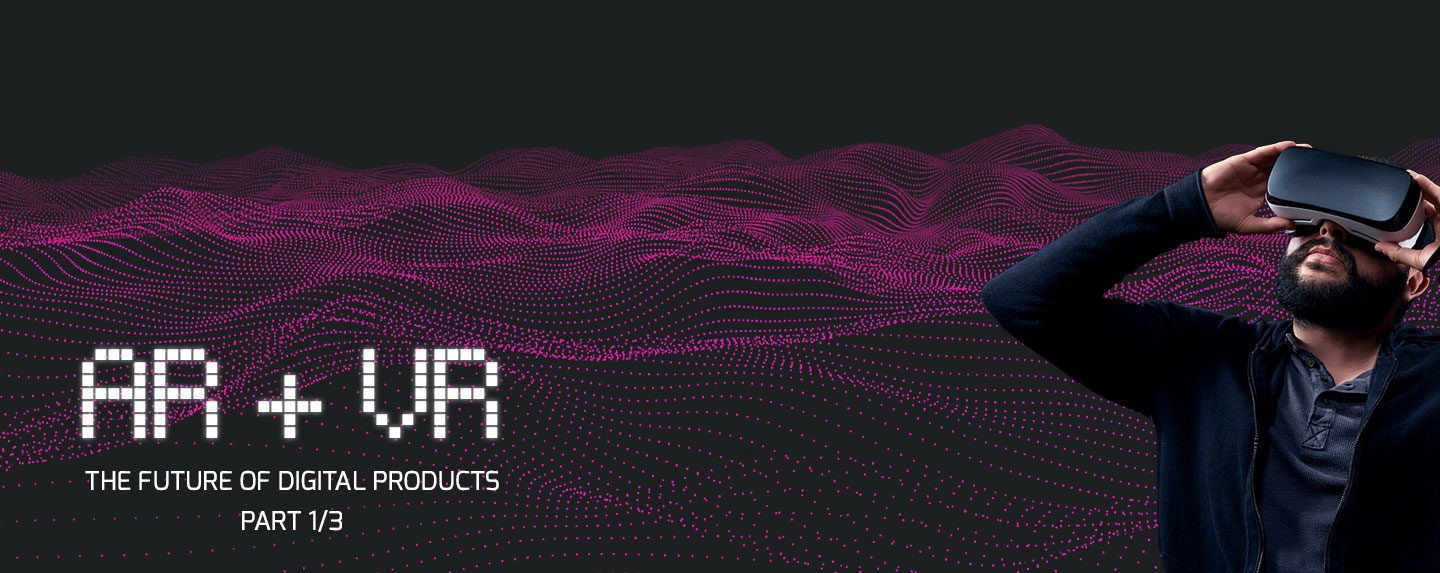Thinking ahead for our clients with virtual and augmented reality

Our CEO John Clauss sat down with Evan Kirchhoff, a virtual reality expert, and one of the members of our innovation team who has worked with us as a strategic advisor since 2001.
Their goal was to think together about the current and future states of virtual reality and augmented reality. Marker Seven is particularly interested in this line of thought because a number of our clients come from industries or are working on projects particularly conducive to AR and VR, such as medical equipment, educational platforms, and retail products.
We’re also in conversations with a number of other companies about how we can—as always—think ahead for them about how AR and VR can help them meet the future. Not everyone who can make great use of AR or VR thinks of themselves that way—yet.
JC: First, let’s talk terms. Virtual reality, augmented reality, and the fast-fading mixed reality. What terms do you favor for the kinds of applications you’re doing, and why?
EK: Virtual reality and augmented reality share a lot of technology, such as motion tracking, but they have very different uses. VR is for fully immersive simulations: it lets you go inside the computer and experience a completely fictional world. AR does the opposite: it brings the computer out into the real world, in the form of graphical elements attached to real places or things.
VR works amazingly well today, and creates very compelling experiences – but doing it properly requires high-end computers, clunky headsets, and either cameras on your desk (Oculus Rift) or lasers mounted on your walls (HTC Vive). That’s a lot to ask of the average consumer, so the primary adopters so far are basically gaming enthusiasts.
AR has a much wider range of practical applications -- probably close to the scope of the web itself -- but the experience is currently farther away from its ideal. Today, most AR experiences use smartphones, since it’s a camera and motion-tracking technology that everyone already has in their pocket, but it limits us to holding a phone out in front of us with one hand and looking at the world through that tiny window, and interacting only by tapping on the screen – so the experience is both more limited and more mediated than VR.
The term “mixed reality” was intended as an umbrella for both of these. We might eventually think of AR and VR as aspects of the same technology, where VR is something like “AR turned up to 100%” and running on the same wearable hardware. But for the foreseeable future, VR is something you put on your head at home in your living room, and AR is something you look at through your phone.
JC: How would you contrast the VR/AR strategies of the major platform companies like Google and Apple?
EK: Google is working simultaneously from the low end, by adding VR features to Android phones, and the high end, by building immersive apps for HTC’s headset like Google Earth VR and the 3D paint program Tilt Brush. They’re also working with HTC on a new headset, and this will probably be accelerated by their acquisition of HTC’s hardware engineers. Apple is focusing on AR, since it works very well on today’s iPhones, whereas VR works best on high-performance gaming hardware that you can’t use with today’s Macs. Microsoft is doing a bit of everything: they have a high-end AR headset (HoloLens) and are working with OEMs to produce midrange VR headsets for PCs.
This interview is the first in a series of three. In the next segment within a month, Evan speaks to some similarities and differences between the Star Trek Holodeck, and the actual capacities of virtual reality.